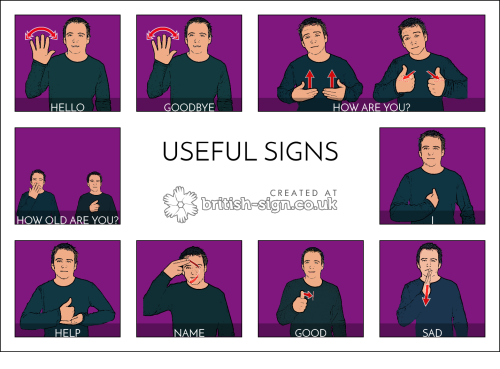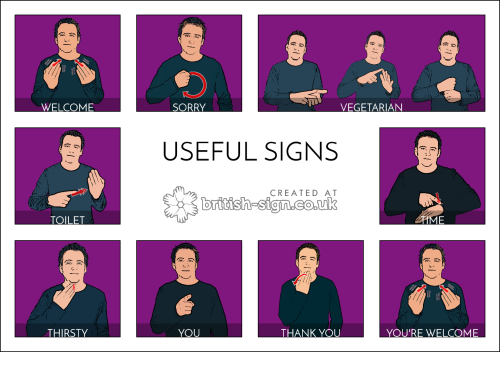Someone: Engame Is The Best Crossover On The Planet !
someone: Engame is the best crossover on the planet !
me, and intellectual:

More Posts from Thisuserisyou and Others

hii remember these guys??? i made them worse

“Image description: a black rectangle, a metaphorical forecast of what the Internet would look like if artists stopped sharing content because they get discouraged or too scared to post for fear of having their work stolen, their art reposted, and their credit taken away.“

this is the gay witch story youve all been waiting for
textless under the cut
Keep reading

i love these dorks so much
If you ever wanted to know how to properly do a 2d character turn, my friend max and I made a video showing you how to use the photoshop timeline to create a rotation of your characters. this can be applied to almost any type of character design. you can watch the full video here on our youtube page.
https://youtu.be/yvUkaBhwAFY


More hearing people should learn some sign language so here are some actually useful signs for us hearing people to learn.
Webcomic tips
In the conclusion for now, some things I’d really recommend doing if you’re seriously considering making a webcomic (or really a comic in general). Some of these don’t really apply to strips or gag-a-day type of comics, but I’m not talking about those here.
1. Write down ideas\sketch stuff, LEGIBLY. “I’m gonna remember it later” NEVER works. And if you scribble it somewhere on a piece of paper, you’d better scan it or retype in one doc later, because tiny notes always get lost among other doodles in my skethbooks.

(i know it’s hard to keep everything clean and organized, but this mess is just not productive)
If your project is a collaboration, save your conversations. If you’re working alone, make a blog for your ramblings. You have no clue what tears of relief I cry when I open that blog and rememeber I don’t have to painstakingly look through my heaps of sketchbooks and folders for a tiny idea I’m not even sure I wrote down a few months ago.
2. Inspiration folders, or even better, inspo blog with tags also help with collecting and remembering ideas. Color schemes, landscapes, style inspirations, atmospheric stuff, maybe some photo references, all those neat things.

3. Basic tier: character design sheets. Top tier: common poses, expressions. God tier: outfits they wear throughout the comic. Holy cow tier: turnaround sheets for all those outfits.

(I’d die trying to find good pages for references without these)
4. If you haven’t finished detailing the plot, don’t even think about moving on to drawing the comic. You’re gonna regret it when you come up with a really cool plot element that can’t be incorporated anymore because you’ve already drawn all the parts you could’ve tweaked.
5. Don’t just define the plot, make a script. Writing down the lines and the brief description of the actions serves me fine:

(notice that I approximately divided the pages & the text that’d go to each panel on a page)
6. Hard mode: make thumbnails for all the pages, if possible. At least whenever a new chapter starts.
7. If your story involves some convoluted chronology shenanigans, you’d better write down the events of your timeline in the chronological order.
8. Backgrounds. You can’t avoid them, bro. Like half of the comics are backgrounds, especially if your story involves a lot of adventuring and looking around. I know it hurts, but you’ll have to become friends with them. Read some tutorials, practice on photos, go out and sketch some streets, use 3d programs (like Google Sketch) to understand the perspective, use sites like houseplans to visualize your buildings better, I don’t know. Just be prepared for their imminent evil.
9. If you’re drawing digitally, pick a brush size for the lines and stick with it. You don’t want your lines and detail levels to look all wonky and inconsistent in different panels. And I don’t mean the cool stylistic varying lines, I mean this:

Also, things on the background should have thinner and/or lighter lines to avoid distraction. Usually less details too, unless you’re making a busy background with a simple foreground to help it pop out. Or wanna draw the attention to an object on the bg.

10. Readable fonts. Even if you chose to ignore people with poor sight or dyslexia, the majority of your readers aren’t gonna be excited about struggling to decypher this:

Also, as much as I love my black speech bubbles, colorful text on black still kinda hurts the eyes. I wouldn’t recommend doing that for all the characters. Black speech bubbles are usually used for creepy, inhuman voices. And yes, having a colorful outline in this case helps.
11. Probably newsflash, but did you know that panels have their place, order and functions? They do! My favourite thing ever is how I used panels when I was like 12:

(comics ain’t rocket science, but this one is)
The composition of the panels and word balloons always serve for a better reading experience. They guide your eyes over the page, so that you never feel lost or confused. The images in the comic equal frames in a movie, so it’s pretty damn important in what order you look at things and how quickly you can understand what’s going on!

(Eric Shanower & Scottie Young’s Wizard of Oz)
12. One update a week is fine for testing waters. Don’t overestimate yourself, especially if you have a pretty busy life outside it. A stable comic that updates slowly, but regularly is better than an unpredictable erratic one. You can always pick up the pace later, if you feel confident enough.
13. Try to always have a buffer - a couple of pages in reserve. If you’re making the pages much faster than you’re updating, this shouldn’t be a problem. But if those paces are equally the same, it’s goddamn HARD. But on the other hand, if something happens and you skip an update, those come in handy.
If you’re looking at this list and thinking “wow that’s a LOT of work”, you’re totally right. And it’s okay to be intimidated at first! But that’s why it’s important to start with something small. Once you get the formula down, these things will be natural to you.










Action Adventure Cinematic Storyboard Workshop / SPRING 2020
https://artofsteveahn.com/item/action-adventure-cinematic-storyboard-workshop-full-class
This online 8-week course workshop will share basic principles and fundamentals of cinematic storyboarding and demonstrate how to apply them into an actual storyboard execution. From story beat breakdown to composition to laying out camera lenses to character acting and more, from basic technical skills to the creative process, the important key knowledge of cinematic storyboarding will be discussed step by step.
DATE
January 14th ~ March 3rd, 2020
INSTRUCTORS
Lecture - Steve Ahn is an animation director and artist. His work credits include director at Voltron Legendary Defender, assistant director at The Legend of Korra, and storyboard artist for various shows such as Teenage Mutant Ninja Turtles, Ben 10, Generator Rex, and many more in the action-adventure genre. Currently, Steve is working on his first independent animated series, Blossom Detective Holmes.
Assignment Critique - Sung Shin is a storyboard artist. His credits include Voltron Legendary Defender, Young Justice, Big Hero 6 TV Series, Guardians of Galaxy, Ben 10 Omniverse, Star Wars Galaxy of Adventures and many more. He has recently joined the Blizzard Cinematic Team.
ABOUT
There are many others who want to learn action storyboards and to build a career based on it. But there aren’t many classes that teach you this kind of storyboarding. This workshop is for those of you who are pursuing a storyboard career in the animation industry. Those who want to strengthen basic storyboarding techniques. Those who are art students. Those who want to work in action-adventure shows. Especially those who live far away from the Hollywood animation industry and have struggled to find an opportunity to learn.
Students will receive a website link to view and watch the workshop lecture, and an exercise based on the topic shared from the workshop, sharpen basic technical skills and tackle challenging story sequences like a conversation in drama, 1-on-1 martial arts fights, chases, large-scale action montages and more. The students will have access to rewatch the lecture videos for 1 year.
Each week during the workshop, the students will have the assignment to do, and they will receive a critique video based on their assignments.
Once you purchase this course, you will have a promo to unlock one more NEW PERSPECTIVE LECTURE by guest instructor, William Niu (BG Designer from The Legend of Korra & Voltron Legendary Defender) for FREE!
THIS WORKSHOP INCLUDES
1 YR SUBSCRIPTION OF THE COURSE, 8 VIDEO LECTURES + 1 FREE PERSPECTIVE CLASS VIDEO
8 ASSIGNMENT CRITIQUES
CURRICULUM
Lecture 1 - Directional Scene Design
Lecture 2 - Storytelling Through Composition I
Lecture 3 - Storytelling Through Composition II
Lecture 4 - Storytelling Through The Eye of Camera Lens
Lecture 5 - Montage Sequence
Lecture 6 - Drama Sequence with dialogues
Lecture 7 - Action/Fight/Battle Sequence
Lecture 8 - Big Group Action Sequence
More Info & Enrollment at https://artofsteveahn.com/item/action-adventure-cinematic-storyboard-workshop-full-class

-
 byblackswan liked this · 5 years ago
byblackswan liked this · 5 years ago -
 galaxyglitchchic liked this · 5 years ago
galaxyglitchchic liked this · 5 years ago -
 rechicken-and-waffles liked this · 5 years ago
rechicken-and-waffles liked this · 5 years ago -
 medgeyworthy liked this · 5 years ago
medgeyworthy liked this · 5 years ago -
 imsuperwhomervenglocked liked this · 5 years ago
imsuperwhomervenglocked liked this · 5 years ago -
 sactavia liked this · 5 years ago
sactavia liked this · 5 years ago -
 kungfupandafan100 liked this · 5 years ago
kungfupandafan100 liked this · 5 years ago -
 prussias-sexy-beast reblogged this · 5 years ago
prussias-sexy-beast reblogged this · 5 years ago -
 imsuperwhomervenglocked reblogged this · 5 years ago
imsuperwhomervenglocked reblogged this · 5 years ago -
 thisuserisyou reblogged this · 5 years ago
thisuserisyou reblogged this · 5 years ago -
 golden-rolling-hills liked this · 5 years ago
golden-rolling-hills liked this · 5 years ago -
 sasssyy-stilinski liked this · 5 years ago
sasssyy-stilinski liked this · 5 years ago -
 jefftheaccountant reblogged this · 5 years ago
jefftheaccountant reblogged this · 5 years ago -
 mundane-macabre reblogged this · 5 years ago
mundane-macabre reblogged this · 5 years ago -
 mundane-macabre liked this · 5 years ago
mundane-macabre liked this · 5 years ago -
 nuevoca liked this · 5 years ago
nuevoca liked this · 5 years ago -
 much-the-millers-kid reblogged this · 5 years ago
much-the-millers-kid reblogged this · 5 years ago -
 much-the-millers-kid liked this · 5 years ago
much-the-millers-kid liked this · 5 years ago -
 stillunalive reblogged this · 5 years ago
stillunalive reblogged this · 5 years ago -
 stillunalive liked this · 5 years ago
stillunalive liked this · 5 years ago -
 vestwpockets reblogged this · 5 years ago
vestwpockets reblogged this · 5 years ago




